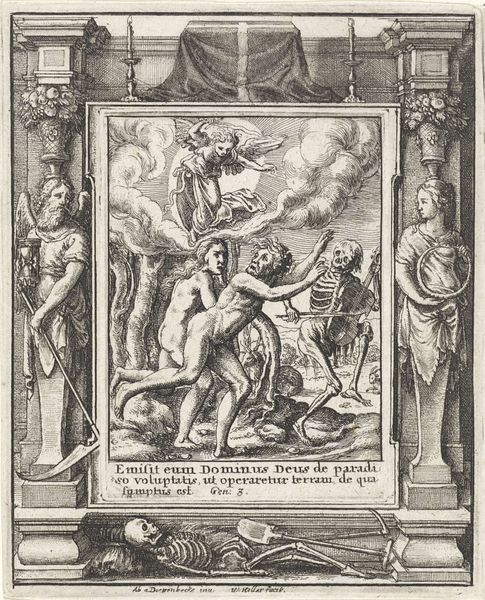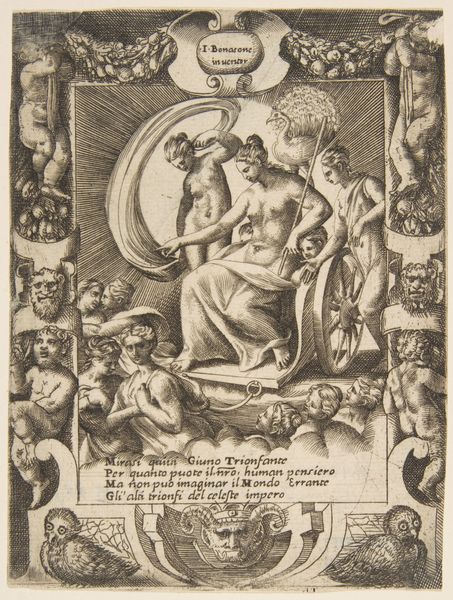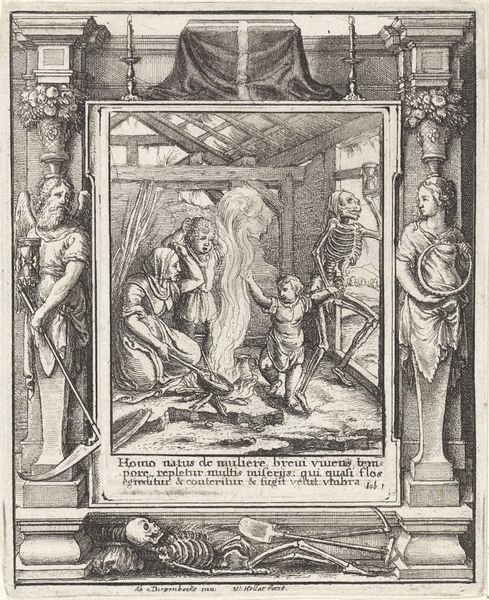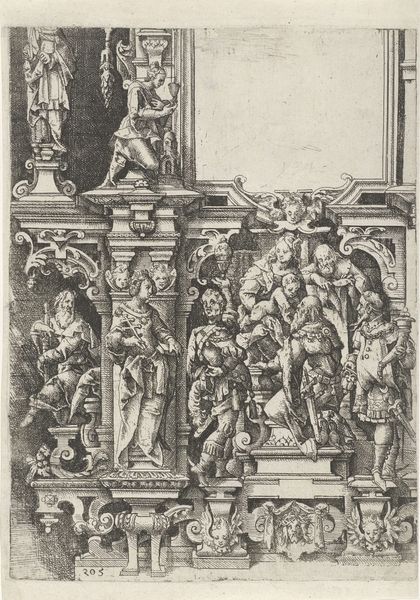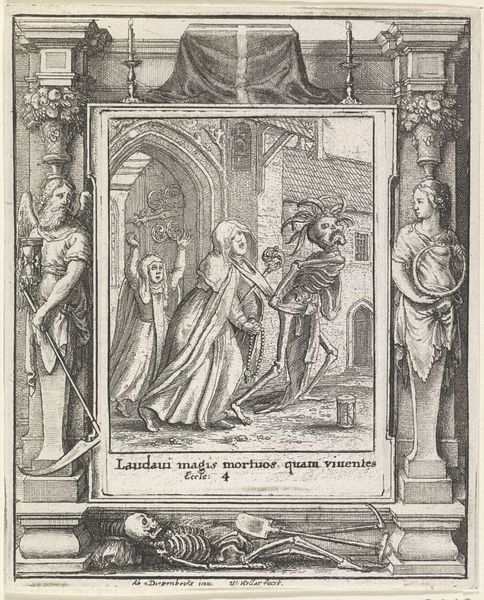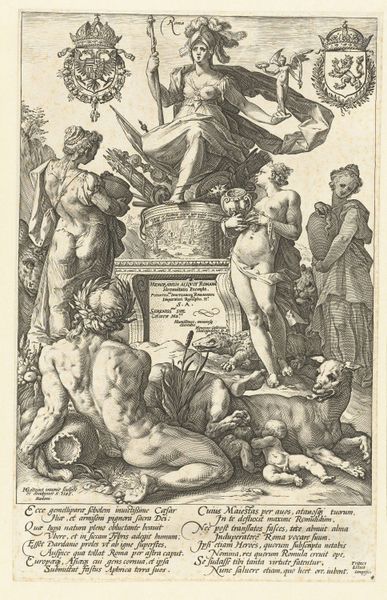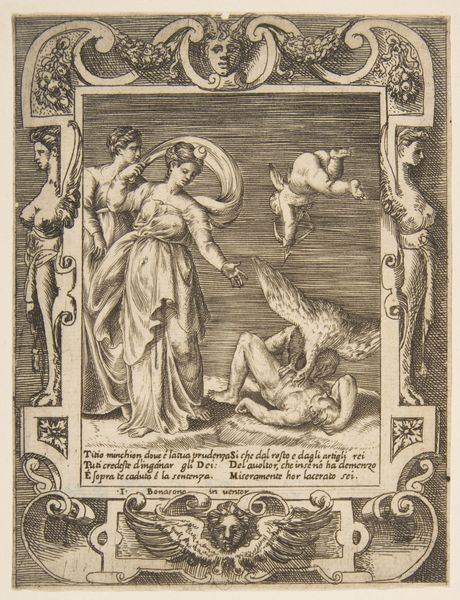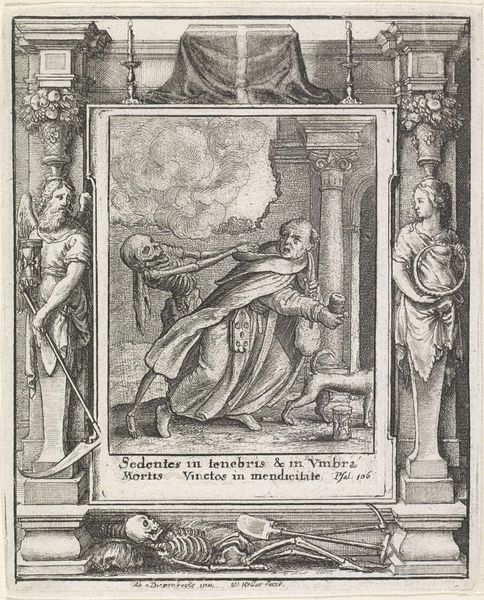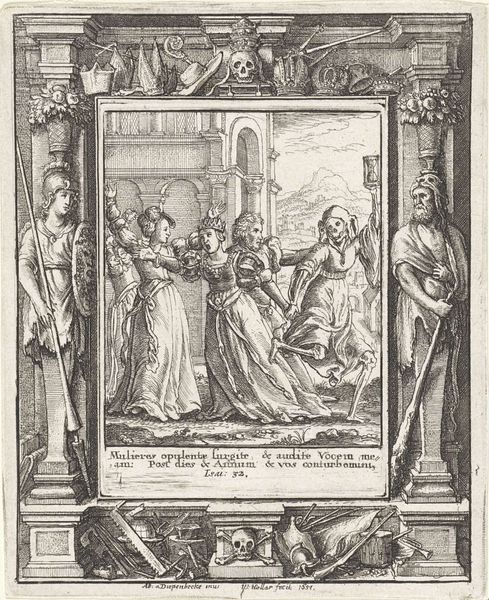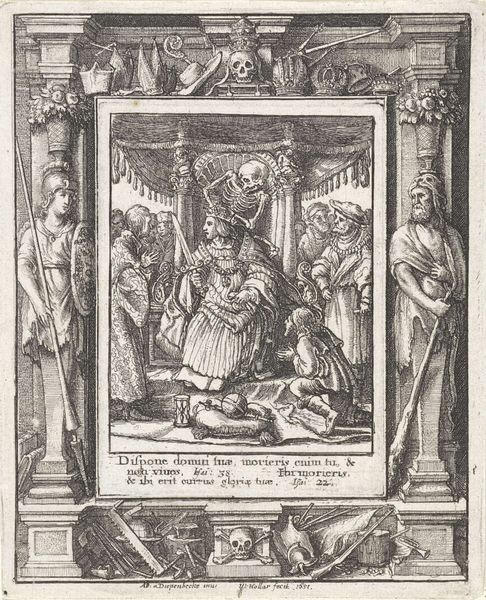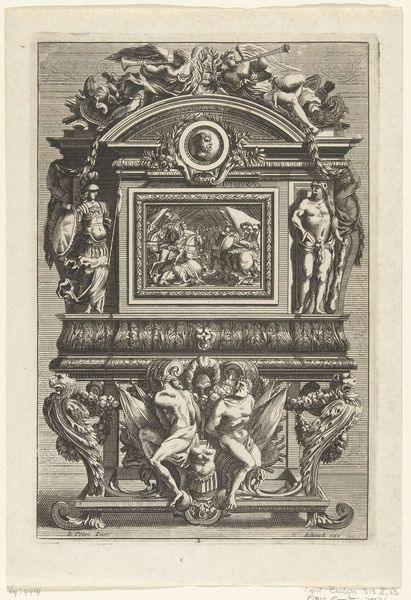
print, engraving
#
allegory
#
baroque
# print
#
pen illustration
#
landscape
#
figuration
#
history-painting
#
engraving
Dimensions: height 115 mm, width 95 mm, height 77 mm, width 58 mm
Copyright: Rijks Museum: Open Domain
Editor: This engraving, "Zondeval," or "The Fall of Man," created by Wenceslaus Hollar in 1651, it's a surprisingly busy print, almost chaotic in its detail. There's so much going on; it almost overwhelms the central scene with Adam and Eve. What story does Hollar tell through all these layers? Curator: Layers, indeed. It feels like Hollar isn't just illustrating a biblical moment but contemplating its ripples, you know? Like dropping a pebble in a pond and watching the consequences spread outward. He gives us the apple, the temptation, sure, but also time (look at Father Time) and consequence; there's death right at the bottom. Don't you feel the frame he creates is a kind of gilded cage, both beautiful and terrifying? Editor: A gilded cage, that's a striking image. The presence of Time and Death makes it clear that Hollar isn’t just depicting a single moment but the beginning of human mortality. How does the setting influence this reading? Curator: Well, this isn't the lush, inviting Garden of Eden we often imagine. It's dark, almost gothic. Those aren't cute lambs, those sheep look like gargoyles! The Fall isn't just about disobedience; it's about losing innocence, entering a harsher reality. It makes me think about the artifice of paradise versus the thorny truth of existence. What do you make of the choice to include this landscape rather than isolating the main figures? Editor: Seeing it that way makes me consider this is more of an intellectual argument, the serpent is less about temptation but represents change and decay. So is Hollar using allegory as a warning? Curator: Maybe less of a warning, and more of a meditation. It's like he is looking at the world through this lens of original sin, examining how that "first choice" echoes through time, rippling outwards and transforming everything. Perhaps it's comforting – after all, every fall is followed by eventual forgiveness and a chance to rise. Editor: That is an interesting point – looking at "The Fall of Man" beyond a biblical story but as the start of a cycle. Curator: Exactly, maybe he invites us to contemplate that, and also, hopefully, offers just a sliver of hope.
Comments
No comments
Be the first to comment and join the conversation on the ultimate creative platform.
